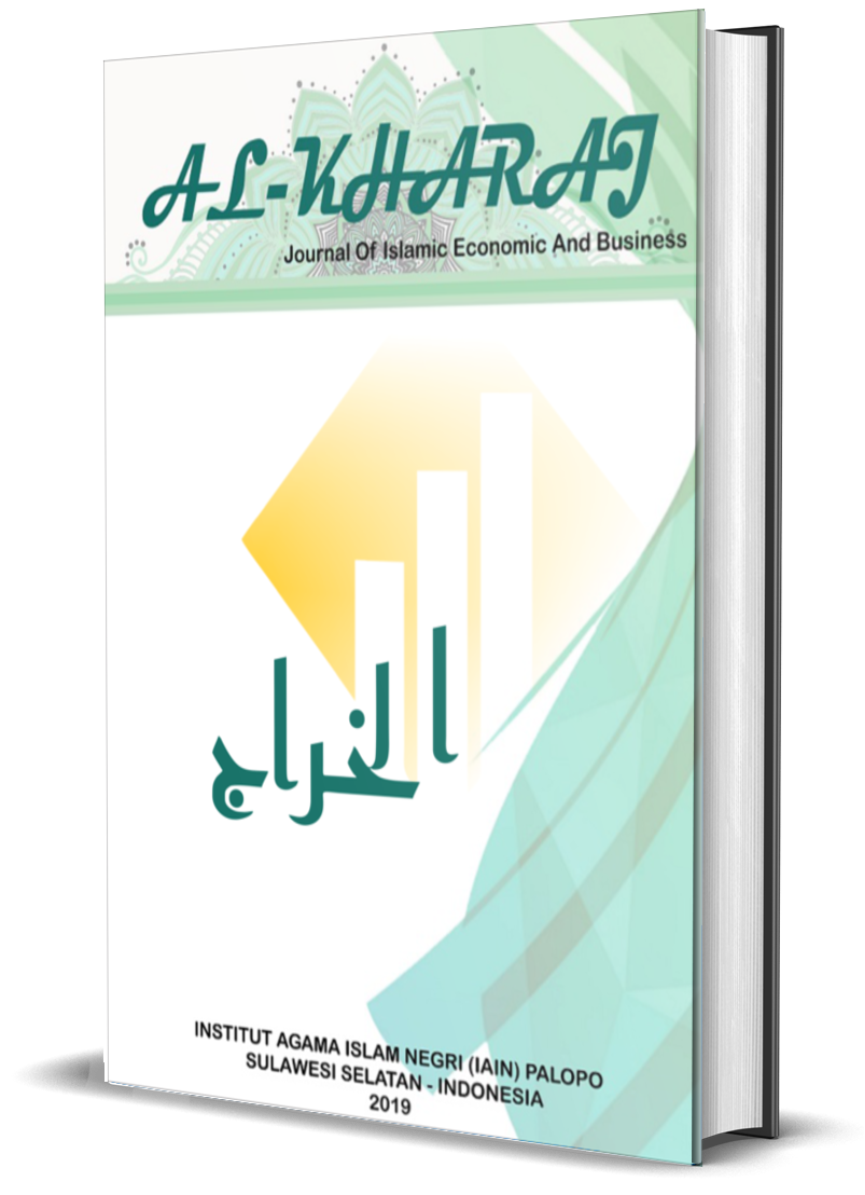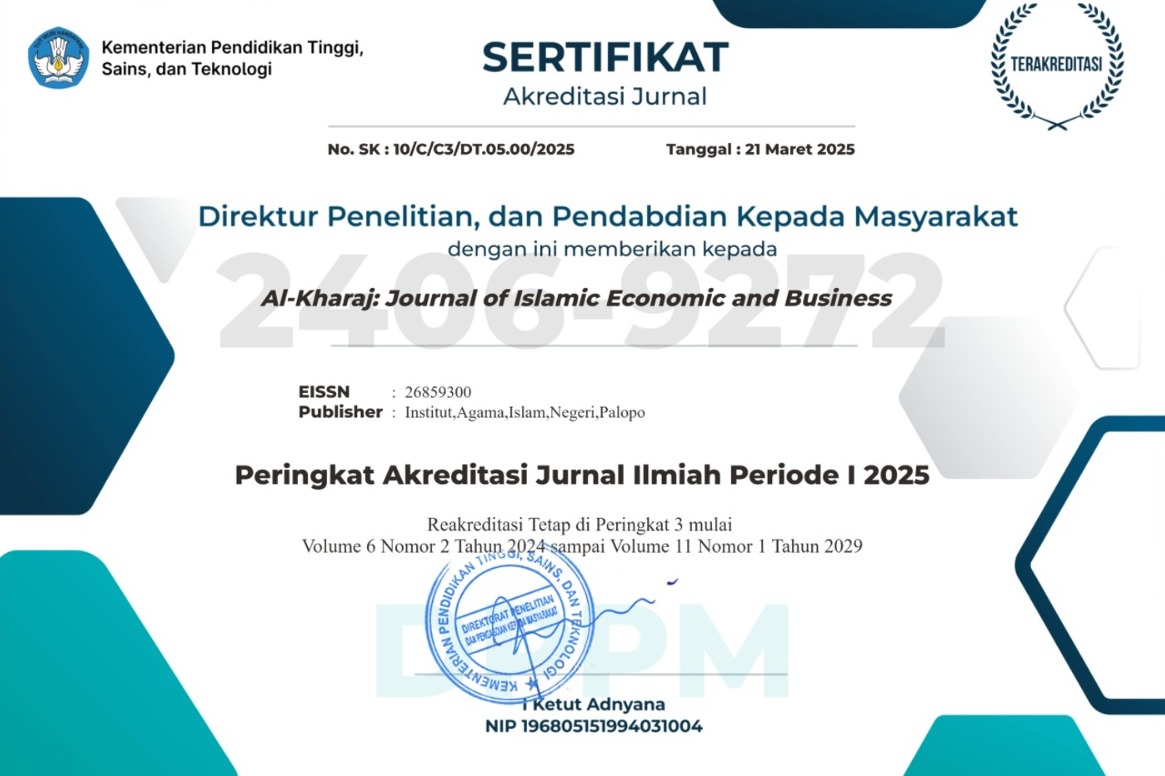An Analysis of the Effectiveness of TikTok Video Content in Increasing Customer Engagement (A Study on Fashion MSMEs in Samarinda)
DOI:
https://doi.org/10.24256/kharaj.v7i4.8078Keywords:
TikTok Video Content, Customer Engagement, Content Strategy, Fashion MSMEs, Samarinda.Abstract
This study aims to analyze the most effective TikTok content strategies for fashion Micro, Small, and Medium Enterprises (MSMEs) in Samarinda and to determine the influence of content quality on increasing customer engagement. The research employed a mixed-methods approach, with quantitative data obtained through customer surveys and the analysis of over 100 promotional posts (Code A1-A100) during the April 2025 period. Quantitative analysis utilized Descriptive Statistics and Structural Equation Modeling (SEM), with robust model validation (CFI: 0.925; RMSEA: 0.057).
The results of the hypothesis testing indicate that TikTok Video Content has a positive and significant influence on the Increase in Customer Engagement (Standardized Coefficient = 0.684, ). The most effective content is dominated by the principles of Entertainment (highest mean ) and Relatability, with an optimal duration of 15 to 30 seconds. The engagement pattern found tends to be higher in passive and value-marking metrics (Likes and Saves) compared to active metrics (Comments and Shares). Format-wise, Video dominates the awareness metric with the highest Views (Post A44 reached 423,000 Views), while the Carousel format excels in the long-term value (Saves)metric (Post A32 recorded 11,249 Saves).
The implications of these findings suggest that MSMEs must focus on duplicating the successful formulas of Video for awareness and Carousel for value, while prioritizing clear Call-to-Actions (CTAs) to boost conversion. However, optimal effectiveness is hindered by major factors such as inconsistent content production and difficulty in mastering the rapid changes in TikTok trends.
References
Atiko, G., Hasanah Sudrajat, R., & Nasionalita, K. (2016). Analisis strategi promosi pariwisata melalui media sosial oleh Kementrian Pariwisata RI (studi deskriptif pada akun Instagram @indtravel). Jurnal Sosioteknologi, 15(3), 378–389.
Desai, V. (2019). Digital marketing: A review. International Journal of Trend in Scientific Research and Development (IJTSRD), (Special Issue), 196–200. https://www.ijtsrd.com/papers/ijtsrd23100.pdf
Hollebeek, L. D. (2013). The customer engagement/value interface: An exploratory investigation. Australasian Marketing Journal, 21(1), 17–24.
Lau, N., Srinakarin, K., Aalfs, H., Zhao, X., & Palermo, T. M. (2025). TikTok and teen mental health: An analysis of user-generated content and engagement. Journal of Pediatric Psychology, 50(1), 63–75. https://doi.org/10.1093/jpepsy/jsae039
Marti-Ochoa, J., Martin-Fuentes, E., & Ferrer-Rosell, B. (2024). Airbnb on TikTok: Brand perception through user engagement and sentiment trends. Social Science Computer Review.
Martinangeli, A. F. M., & Windsteiger, L. (2024). Inequality shapes the propagation of unethical behaviours: Cheating responses to tax evasion along the income distribution. Journal of Economic Behavior & Organization, 220, 135–181.
Nurfitriani, N., Adisthy Shabrina, N., & Eka, Y. (2019). Pengaruh service quality dan harga terhadap kepuasan dan loyalitas pelanggan Go-Jek di Samarinda.
Rosita Manawari, Girsang, E. Y. S. A. W. U. E. S. N., & A. (2023). Manajemen pemasaran: Konsep dan aplikasinya.
Rokhim, A. K., Yudhyani, E., & Nurfitriani, D. (2023). Pengaruh bauran pemasaran terhadap keputusan menggunakan jasa pada Lineza Souvenir di Samarinda.
Suryanto, T. (2016). [Judul Artikel tidak lengkap, disajikan sebagai deskripsi]. Al-Iqtishad: Jurnal Ilmu Ekonomi Syariah (Journal of Islamic Economics), 8(1), 49
Tussyadiah, S. P., Kausar, D. R., & Soesilo, P. K. M. (2018). The effect of engagement in online social network on susceptibility to influence. Journal of Hospitality & Tourism Research, 42(2), 201–223. https://doi.org/10.1177/1096348015584441
Yudhyani, E. (2024). Strategi pemasaran berbasis media sosial dan dampaknya terhadap brand awareness.
Downloads
Published
How to Cite
Issue
Section
Citation Check
License
Copyright (c) 2025 Eka Yudhyani, Sukirman

This work is licensed under a Creative Commons Attribution-ShareAlike 4.0 International License.
Authors retain copyright and grant the journal right of first publication with the work simultaneously licensed under a Creative Commons Attribution-ShareAlike 4.0 International License. In line with the license, authors are allowed to share and adapt the material. In addition, the material must be given appropriate credit, provided with a link to the license, and indicated if changes were made. If authors remix, transform or build upon the material, authors must distribute their contributions under the same license as the original.









